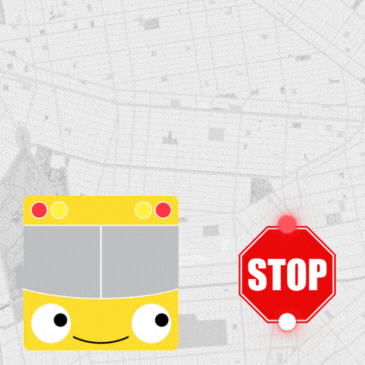In December, not long after “Among Righteous Men” was published, I returned to Crown Heights. The evening was unseasonably warm, and I walked east from my apartment, past the lip of Prospect Park, and down the undulating clamor of Eastern Parkway, my hands in my pockets. The neighborhood, where I had spent so many months reporting — some happy, some not — appeared largely unchanged.
Blog: The Red Devil
In December, not long after “Among Righteous Men” was published, I returned to Crown Heights. The evening was unseasonably warm, and I walked east from my apartment, past the lip of Prospect Park, and down the undulating clamor of Eastern Parkway, my hands in my pockets. The neighborhood, where I had spent so many months reporting — some happy, some not — appeared largely unchanged.
There was the proud façade of the main shul at 770 Eastern Parkway, and there were the clusters of yeshiva students. There in the windows of one building hung the yellow flag of the messianists — believers in the divinity of Rabbi Menachem Mendel Schneerson, the late Rebbe of Lubavitch. In a balcony overlooking the sidewalk, two women were chattering happily in Yiddish. I remembered a snippet from Alfred Kazin’s “A Walker in the City,” the best book about Brooklyn ever written: “Yet as I walk those familiarly choked streets at dusk and see the old women sitting in front of the tenements, past and present become each other’s face; I am back where I began.”
Kazin knew that an emotional connection to place can defeat mere geography. It is the not the physicality of a neighborhood that haunts us, after all. It is the connection between that physicality and our inner lives.
I strolled south down Kingston, towards Empire Boulevard. I had a single destination in mind: a tailoring shop owned by a man named Israel Shemtov. During the ‘70s and ‘80s, when crime rates in the neighborhood were skyrocketing, Shemtov had patrolled Crown Heights under the name the “Red Devil.” He was one of the first Jewish vigilantes — a predecessor to the Shomrim and Shmira patrols active in the neighborhood today.
Shemtov, who stands just about five feet tall, was also a master of image management. Where other Hasidim shirked press attention, he embraced it, regaling reporters from the Post and the Daily News with tales of bloody brawls and daring midnight takedowns. He compared himself frequently to Charles Bronson, circa “Death Wish.” “There will not be a crime in the neighborhood because they know they will be dead,” he said.
In 2010, I had visited Shemtov at his storefront on Empire. By then, he was two decades retired, pale and stooped. Jamming a soft pack of Kingstons into his front pocket, he showed me into his private office, and pulled the door shut behind him. The room was in appalling condition — water damage had browned half the ceiling, and near the only window, several panels hung loose, exposing a nest of wires and cotton-candy pink insulation. “Sit,” Shemtov said.
For the next two hours, he told me dozens of stories, and sometimes the same story twice: The time he saved the life of a shooting victim; the time he faced down a gang of local toughs; the time he yanked a suspected mugger off a bicycle and beat the kid into the ground with his fists.
“I’ll tell you, since I was a kid, I was a very tough — I was 10 years old, and two kids on my bicycle knocked off my helmet,” he said. “I was a little kid. They said, come over here, I want to talk to you. And I came over and beat the **** out of them. I was strong. I still am, thank God.”
Toughness was necessary for a Jew, he explained — “We’ve been knocked around for too long.” During the 1920s, his father’s family had fled Eastern Europe for New York; behind them, there was only death and destruction. “Because of that,” Shemtov said, “I knew I always had to fight.”
Now, months after that 2010 interview, I found myself galloping faster down Kingston, hoping Shemtov had a few more stories left to tell. But when I arrived at the corner of Empire, I found the storefront dark, the door locked. I knocked several times; there was no answer.
That evening, I phoned my grandmother at her home in Boston. During the year I spent writing “Among Righteous Men,” I had often considered interviewing my grandmother about her mother, Edith, who, much like many of the older Hasidim in Crown Heights, had escaped Eastern Europe under terrible circumstances. For a variety of reasons, I had never gotten around to making the call, but now that the book was behind me, I decided that the timing was right.
Continue Reading at the Jewish Daily Forward














Milhouse
The Shemtovs did not come to NY in the 1920s. They spent the War in Samarkand, and like most of the other Lubavitchers escaped through Lemberg in 1946 and ended up at a refugee hostel in Paris, from where they went wherever they could get a visa.
Unintentional?
Is it possible that the title “The Red Devil”
and including Shea Hechts head in the picture an unintentional smear?
Oh come one
“the messianists — believers in the divinity of Rabbi Menachem Mendel Schneerson ….”
I’m no fan of theirs, but this is grossly inaccurate.
kind heart!
He is a kind man with generous intentiuons
he just gets carried away with partisan politics
Secretly the anti-s also believ
Torah allows for the “messianic” Belief of the Rebbe to return as messiah!
i Challenge anyone to find one chabad Rabbi who will publicly state unequivikly that the Belief of many “that the Rebbe will soon return as Moshiach” is not permitted by Torah sources
Fed Up
Crown Heights needs more people like Shemtov. Back in the 1980’s, there was an incident in which 2 Jews were robbed on a Friday night. The suspect slashed these two Jews with a razor. About 150 Jews, including Shemtov and his son beat the suspect to the ground and held him for the police.